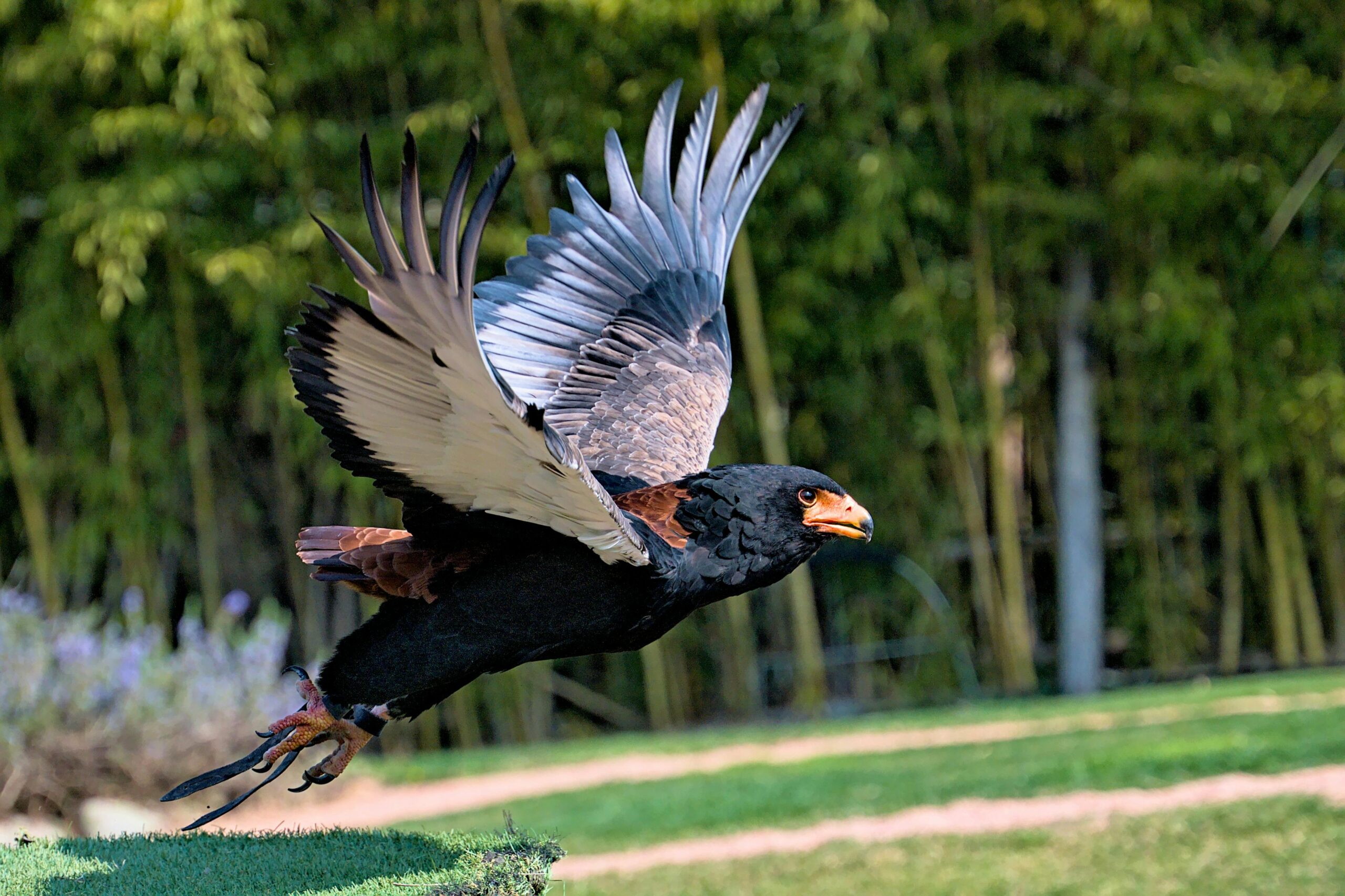The bateleur eagle, a majestic raptor found in Africa, exhibits a distinct sexual dimorphism in size, with females being larger than their male counterparts. This article delves into the specifics of this size difference and explores the reasons behind this unique characteristic.
Comparing the Size of Female and Male Bateleur Eagles
As per the data provided, the size differences between female and male bateleur eagles are quite pronounced. Let’s take a closer look at the key measurements:
Wing Chord Length
- Male bateleur eagles have a wing chord length of 476 to 553 mm (18.7 to 21.8 inches).
- Female bateleur eagles have a wing chord length of 530 to 559 mm (20.9 to 22.0 inches).
Tail Length
- Adult male bateleur eagles have a tail length of 98 to 124 mm (3.9 to 4.9 inches).
- Adult female bateleur eagles have a shorter tail length of 105 to 113 mm (4.1 to 4.4 inches).
Tarsus Length
- Male bateleur eagles have a tarsus length of 67 to 75 mm (2.6 to 3.0 inches).
- Female bateleur eagles have a tarsus length of 72 to 75 mm (2.8 to 3.0 inches).
From these measurements, it is evident that female bateleur eagles are indeed larger than their male counterparts, with an average size difference of around 6%.
Body Mass Differences
The size difference is also reflected in the body mass of bateleur eagles. According to the data:
- Male bateleur eagles weigh between 1,800 and 3,000 g (4.0 to 6.6 lb).
- Female bateleur eagles have a median body mass of 2,385 g (5.258 lb), which is slightly higher than the male range.
This size and weight disparity is a common characteristic of sexual dimorphism in raptorial birds, where the female is often the larger sex.
Reasons for the Size Difference
The larger size of female bateleur eagles compared to males is believed to be an evolutionary adaptation that serves several purposes:
-
Hunting and Prey Handling: The larger size of female bateleur eagles allows them to tackle and handle larger prey more effectively. This can be advantageous for providing food for their offspring during the breeding season.
-
Nest Defense: The larger size of female bateleur eagles may also contribute to their ability to defend their nests and young more effectively against potential threats, such as predators or competing males.
-
Thermoregulation: The larger body size of female bateleur eagles may also play a role in their thermoregulation, helping them to better conserve heat in the often-harsh African environments they inhabit.
-
Reproductive Advantages: The size difference may also confer reproductive advantages, such as increased fecundity or the ability to produce larger, more viable eggs and offspring.
Bateleur Eagle Behavior and Ecology
Beyond the size differences, bateleur eagles exhibit several other fascinating characteristics:
-
Flight Behavior: Bateleur eagles are known for their distinctive flight patterns, which include soaring, gliding, and a characteristic “rocking” motion that gives them their name (“bateleur” means “tight-rope walker” in French).
-
Habitat and Distribution: Bateleur eagles are found in various habitats across Africa, including savannas, grasslands, and open woodlands. Their range extends from southern Africa to the Horn of Africa.
-
Diet and Hunting: Bateleur eagles are opportunistic predators, feeding on a variety of prey, including small mammals, birds, reptiles, and even carrion.
-
Breeding and Nesting: Bateleur eagles are monogamous and form long-term pair bonds. They build large stick nests in trees or on cliffs and typically lay one or two eggs per breeding season.
Conclusion
The bateleur eagle is a remarkable raptor that showcases the fascinating phenomenon of sexual dimorphism, with females being larger than their male counterparts. This size difference likely confers various advantages, from hunting and prey handling to nest defense and thermoregulation. Understanding the nuances of bateleur eagle biology and ecology can provide valuable insights into the evolutionary adaptations of these majestic birds.



